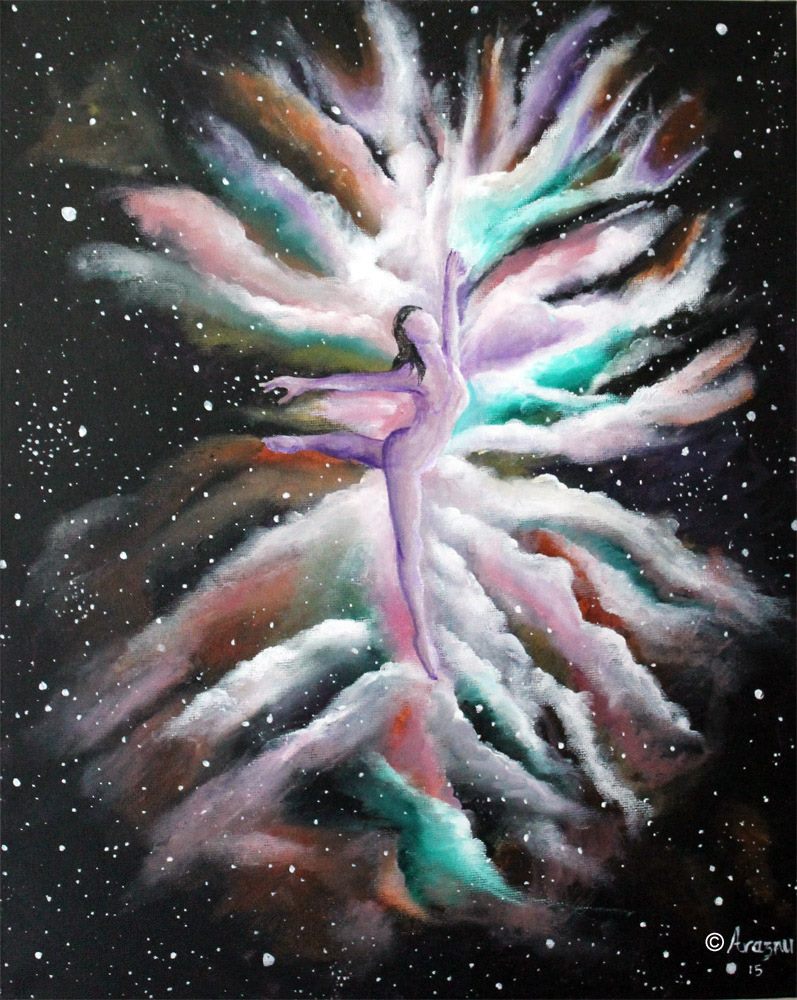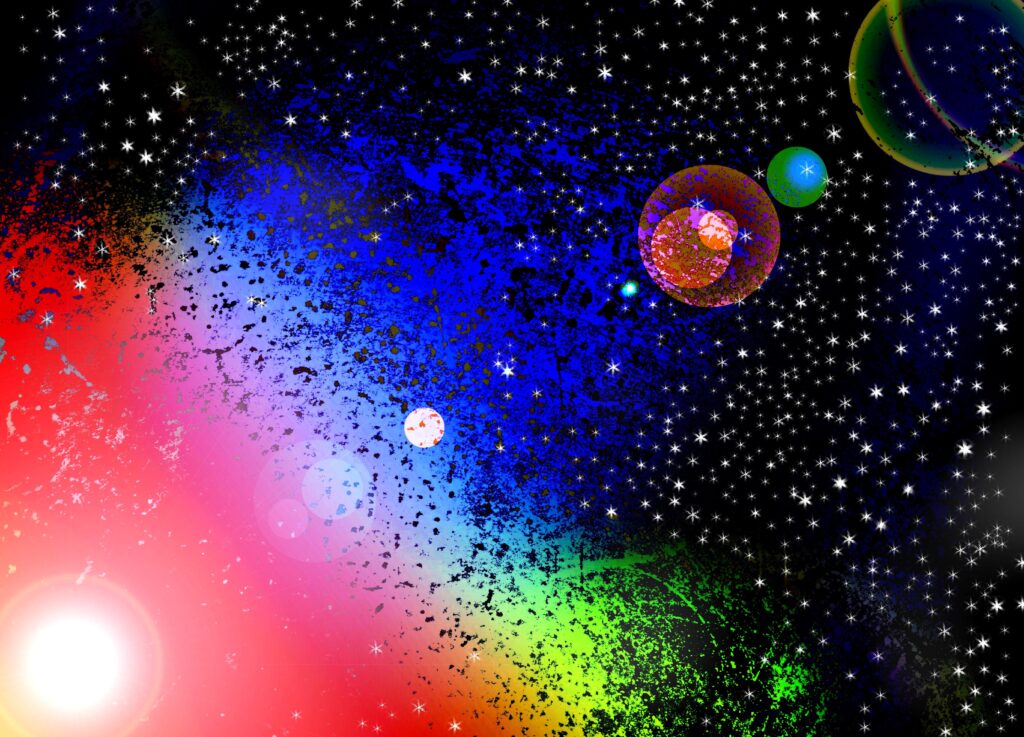Why Non-Attachment is the Key to Finding Inner Peace in a Crazy World
 “Non-attachment” sounds a bit intimidating, doesn’t it? Unfortunately, most people tend to associate this spiritual phrase with being emotionally cold and unfeeling. But true non-attachment is quite the opposite: it allows us to live in this world fully, without being attached to people, things or thoughts that create suffering.
“Non-attachment” sounds a bit intimidating, doesn’t it? Unfortunately, most people tend to associate this spiritual phrase with being emotionally cold and unfeeling. But true non-attachment is quite the opposite: it allows us to live in this world fully, without being attached to people, things or thoughts that create suffering.
As the Dalai Lama was once quoted to have said, “Attachment is the origin, the root of suffering; hence it is the cause of suffering.” But we don’t have to sell everything we own and become monks or nuns to practice non-attachment; we simply need to understand the vital importance of letting go.
Non-attachment or release from desire has been spoken about in many religions such as Taoism, Hinduism, Jainism, and the Bahá’í Faith, but this concept is most commonly linked to Buddhism.
Here are a few perspectives from these spiritual traditions on non-attachment:
The root of suffering is attachment – The Buddha (Buddhism)
When we come to non-attachment, then we can understand the marvelous mystery of the universe: how it is intense activity and at the same time intense peace, how it is work every moment and rest every moment. – Swami Vivekananda (Hindu Tradition)
Consider the trees which allow the birds to perch and fly away without either inviting them to stay or desiring them never to depart. If your heart can be like this, you will be near to the Way. – Zen saying
Act without expectation – Lao Tzu (Taoism)
He who is attached to things will suffer much. – Tao Te Ching
Aparigraha (Non-attachment): One of the three pillars of Jainism
Attach not thyself to anything unless in it thou seest the reality of God. – Abdu’l-Baha (Bahá’í Faith)
Detachment is not that you should own nothing, but that nothing should own you. – Ali Ibn Abi Talib (Islam)
There are simply too many quotes out there on non-attachment to include here, but I hope these perspectives give you an idea of how important non-attachment is not only religiously, but on a global level.
What is Non-Attachment?
So what essentially is non-attachment?
Non-attachment is not about being a cold or emotionally dead brick wall, instead, it’s about learning how to let go of the thoughts and emotions that create suffering. Once we can stop being so attached to our thoughts, we experience tremendous relief, inner peace, and a pervading sense of joyful well-being.
So how do we let go of our thoughts and emotions? We must learn to observe and disentangle ourselves from our thoughts through practices such as mindful awareness, meditation, and self-inquiry. When we can simply allow life to unfold naturally without being attached to outcomes, beliefs, feelings or opinions, then we experience true non-attachment. Picture this process of detachment like being an ice cube that slowly melts down into a puddle of flowing water. Water, like the practice of non-attachment, flows with life effortlessly and peacefully, whereas ice cubes do not. The goal of non-attachment, therefore, is to become like water.
Essentially, non-attachment is about letting go of everything, both physical and non-physical – or what spiritual teachers such as Eckhart Tolle refer to as “dying before you die.” At first, this sounds scary, but dying before you die really only means letting go of everything that is preventing you from finding what is true, eternal, unchanging, and forever present. In the words of Tolle, “Death is a stripping away of all that is not you. The secret of life is to die before you die – and find that there is no death.” So non-attachment, at the deepest level, is about returning back to your True Nature by loosening the grip of the mind on internal and external things.
Benefits of Non-Attachment
When we stop clinging to internal and external phenomena, our whole relationship with life is transformed. Here is what may or may not happen when you learn how to practice acceptance and surrender:
- You will stop being controlled by your emotions, instead, you’ll become interested in them
- You won’t be attached to the outcome, meaning that you’ll be free from the dread, anxiety, and inner tension that comes with clinging to expectations
- You’ll be more curious, open, and spontaneous because you have no predetermined desire or craving
- You’ll be more peaceful and less neurotic, meaning that your relationships and friendships will drastically improve
- You’ll feel consistently relaxed and serene because you’re not identifying with your thoughts and feelings (and instead you’re witnessing them as a “passive observer”)
- You’ll be more resilient in the face of loss and death because you’re not attached to people and realize that all things are ephemeral
- You’ll feel a sense of expansive freedom because you’re no longer a slave to the mind
- You’ll feel a sense of wholeness because you don’t need or want anything in particular, you’re happy just as you are in the present moment
- You’ll feel more love for yourself and others because you’re not attaching to beliefs and expectations about who you/others “should” be or what “shouldn’t” happen – you’ll give yourself and other people freedom to be themselves without judgment
- You’ll experience more synchronicity as life unfolds effortlessly and naturally
- You’ll no longer be addicted to “getting” things or filling an empty hole in yourself because you’re content and don’t attach to the belief that someone or something will “complete” you
- You’ll feel more grounded and connected to life because you’re not lost in thought-based attachments – you’ll actually participate in life more fully
- Your mind will become clear and you’ll be able to perceive the truth more easily
- You’ll feel gratitude, love, compassion, and happiness permeate your life as you have let go of the need to chase happiness (which creates unhappiness)
Put non-resistance and non-judgment together with non-attachment, and you have a recipe for complete inner peace. Why? When we stop resisting life and judging things to be “good” or “bad,” we naturally let go of a lot of anger, hatred, fear, and sadness.
The Mistake of Attaching to Non-Attachment
After hearing about non-attachment the tendency of the mind is to instantly fire up and start masterminding ways of “achieving” non-attachment. But be careful! Even the desire to want no desire is still a desire!
The whole point of non-attachment is to begin paying attention to your thoughts. What occupies your mind all day? What drives you? In what ways are you seeking happiness from the external world rather than the internal world? Non-attachment is a concept that helps us to explore what is happening within us … but at the same time, it can easily become yet another attachment. So pay attention. Be wary of allowing non-attachment to become yet another “Trophy” you’re trying to add to your spiritual cabinet because it doesn’t work that way. It is impossible to practice true non-attachment when we’re attached to the desire to be non-attached.
How do we prevent this (largely overlooked) attachment from happening? We’ll explore that next.
How to Stop Being Attached to Thoughts, Feelings, People, and Circumstances
Non-attachment is usually the byproduct of spiritual practices such as self-discovery, self-acceptance, and self-love. Here are some useful ways to begin letting go of habits, desires, and thought-patterns that no longer serve you:
1. Stop looking for happiness in external things
When we chase happiness by believing that someone or something outside of ourselves can make us happy, we suffer. In fact, the pursuit of happiness is the greatest form of attachment there is in society. Instead, try to direct your attention inwards. At first, seeking happiness from within can be extremely difficult as we’ve been conditioned to find “happiness” in material things, accomplishments, titles, and people. But with practice, you will start to find the peaceful center within you known as your soul. Regularly setting aside time to be quiet and still with yourself can help you tune into this inner space.
2. Let go of the “shoulds” and “musts”
How do you approach life? Are the words “should” and “must” a big part of your vocabulary? Expectations (which are mental attachments) are always prefaced with one of these two words, for example, “He should be nicer,” “I must achieve this or I will be a failure,” “They should stop doing that immediately.” Pay attention to the use of these two words and how they reflect in your behavior. Are you believing that something “should” happen or someone “must” be a certain way? Let it go. You cannot change people. Allow life to flow without imposing useless expectations onto it.
3. Practice allowing
Allowing is about permitting life to be just as it is. Allow your thoughts. Allow your emotions. Allow things to not go the way you expected. In the words of Abraham Hicks, “The Art of Allowing is the art of finding my alignment, and therefore, living in joy no matter what’s happening around me.” By allowing life to happen, you stop resisting and suffering ceases.
4. Make friends with uncertainty
We control, obsessively plan, and try to predict things out of pure fear. But the problem is that the more we resist uncertainty, the more paranoid, anxious, and tense we become. When we learn to embrace uncertainty and to allow life to unfold as it wants, we don’t experience fear anymore – instead, we feel calm, curious, and open to all possibilities. This openness allows us to adopt a playful attitude towards life because we’re no longer limited by fearing the unknown. Sometimes a simple shift in mindset can help you befriend uncertainty instead of loathe it. For example, instead of dreading “what will come around the corner” start perceiving the unknown as a big surprise waiting to happen.
5. Learn to observe your thoughts and feelings
The easiest way to observe your thoughts and feelings is through a regular daily meditation practice. I recommend trying Vipassana meditation as it helps you to stay grounded while discovering with first-hand experience that you are not your thoughts: your thoughts are simply fluctuations of energy that rise and fall like waves in the ocean. The more you incorporate thought-awareness into your life, the more readily you’ll see how irrelevant many thoughts are: they only mean something when you assign them meaning. When you don’t give thoughts importance, they cease to cause you pain.
6. See how transient all things are
Look around you and try to find something that will last forever. Who or what will last eternally? The reality is that all things will sooner or later die. By reminding yourself of this fact, you will start living life as fully and completely as possible. Seeing the transience of life is deeply saddening but also gives us the opportunity to experience true joy. If everything lasted forever, what a boring thing life would be! Death helps us to appreciate life. So appreciate it while you have it. Furthermore, use this recognition to fuel your pursuit to find that which doesn’t change, or that which is eternal. Start looking within and you will be surprised … or more than surprised, ecstatic!
» Source



